The southern section of Hungária Boulevard and its end in Pest were completed with Rákóczi Bridge in 1995. Preparation of the bridge had lasted decades, with over thirty different plans being drawn up before being opened to the public on 30 October 1995.
But why were so many versions needed? The construction of every bridge is preceded by several studies about what kind of bridge is needed, what it should look like, and what role it should play in transportation.
In the case of Rákóczi Bridge, ideas changed often, as they were always adapted to the current plans Hungária Boulevard. In the 1960s and 1970s, the Hungária Ring Road was seen as a ring motorway, necessitating a fitting bridge. There were new aesthetic expectations. The bridge should be simple, cheap and carry two-times four lanes. Plans for the first phase were limited to dual-carriageway design, which would later be expanded. As eventually happened with the Deák Ferenc Bridge.
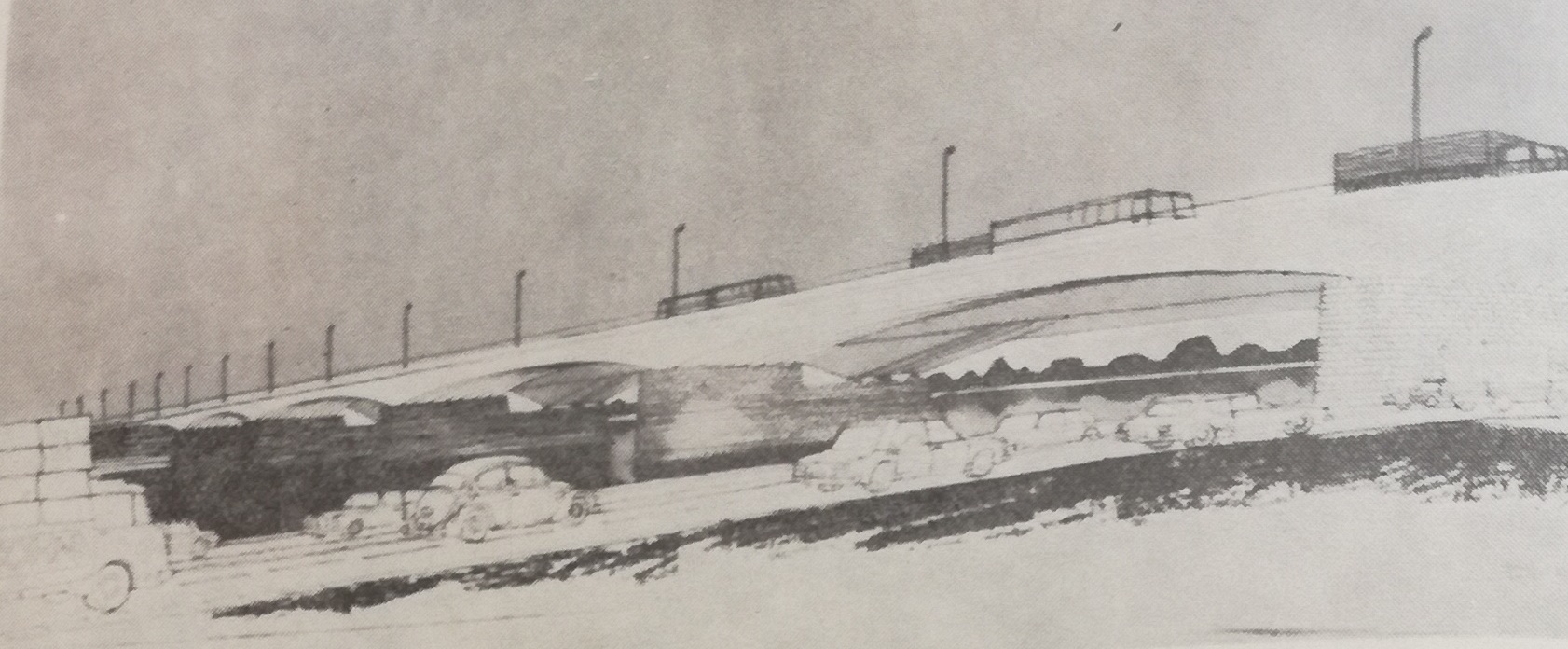
Winning 1971 design for the bridge (Source: Városi Közlekedés, 1972/4)
The first design tender was issued in 1971. As the location of the bridge was given: right next to the Southern Connecting Railway Bridge, engineers were faced with a decision. Their designs either had to tower over the rail bridge or be aligned to it. Several ideas were submitted, and a plan for a massive six-span concrete bridge by the Budapesti Városépítési Tervező Vállalat ('Budapest urban development planning company') won the tender. Despite this, preparations were made to construct the steel truss bridge designed by FŐMTERV.
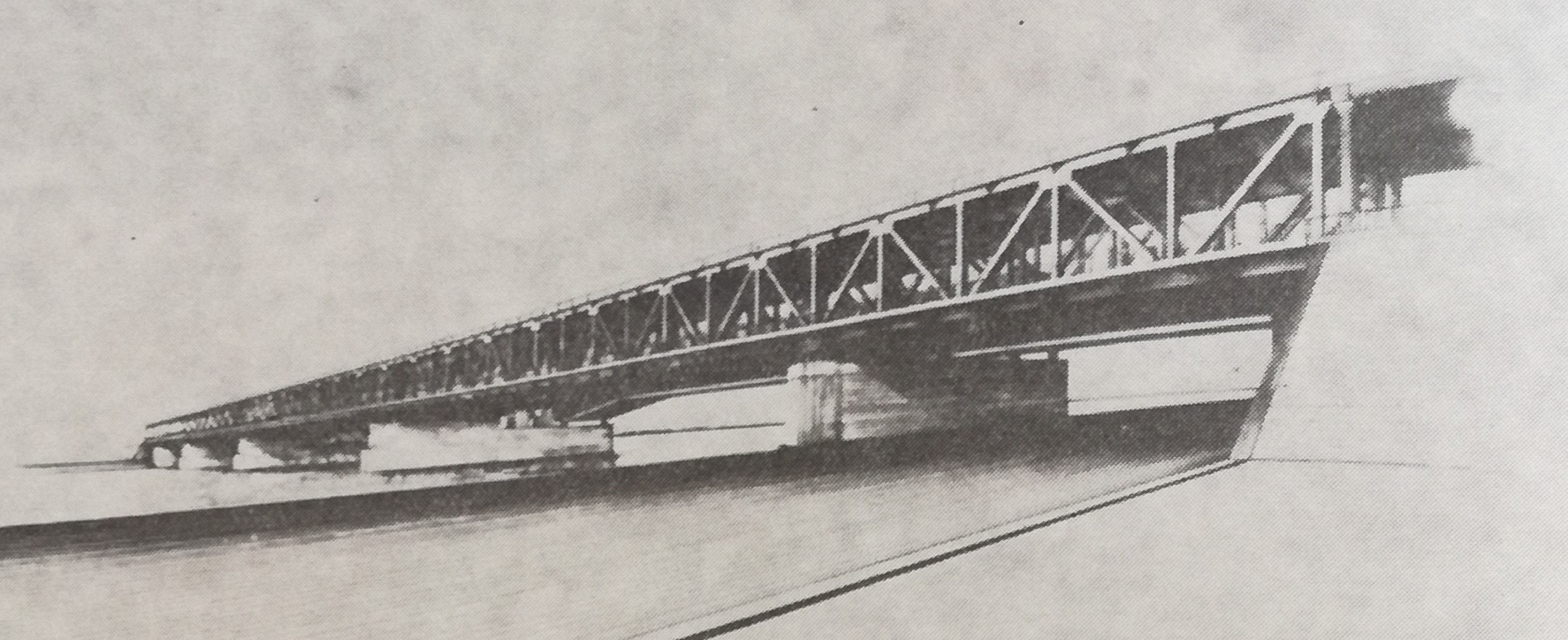
Plans for two-level steel bridge by FŐMTERV (Source: Városli Közlekedés, 1972/4)
However, in the 1970s, the role of Hungária Boulevard was re-imagined. The motorway was to be diverted further from the city, and thus plans for the bridge, known as Lágymányosi, were shelved for a few years.
With the widening of Árpád Bridge in 1984, the construction or reconstruction of bridges that had stood in Budapest, or been started, before the Second World War came to a close. Urban planners then began examining the best location for a new bridge in Budapest. It was evident that it would have to be somewhere in the south. After looking into several different locations, including in-line with Kondorosi út, or the location of Albertfalva Bridge, the original location next to the Southern Connecting Railway Bridge was chosen.
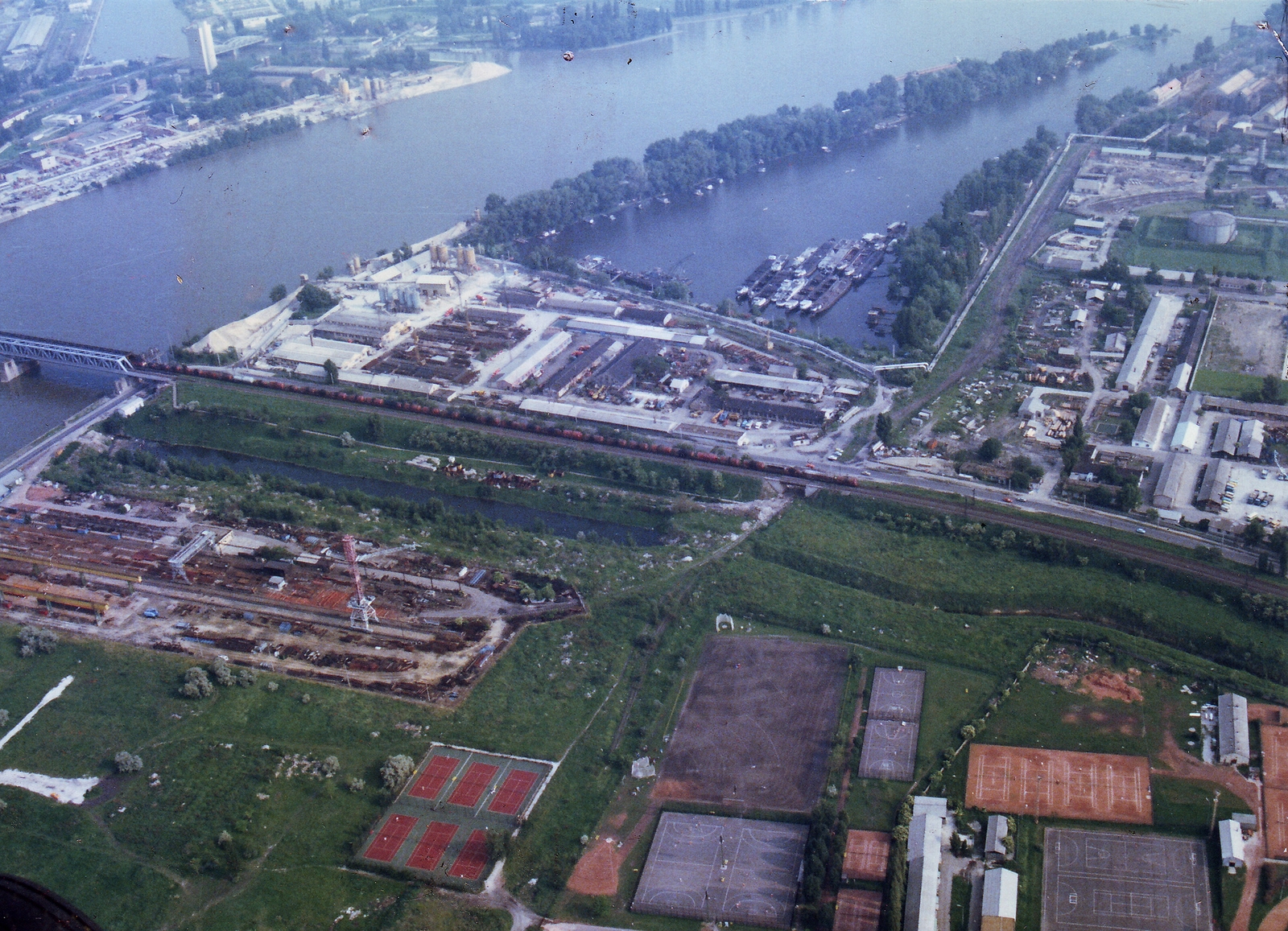
The surroundings of the bridge in 1980. The small lake next to the embankment was only cleared during construction (Photo: Fortepan/No.: 174885)
The plan was completed in 1986 and outlined a simple, not particularly good looking bridge, built for cars with a very narrow pavement. The most important requirements were quick, economic construction, with minimal Western imports. At the time, construction was slated to begin in 1989 and be finished by 1991.
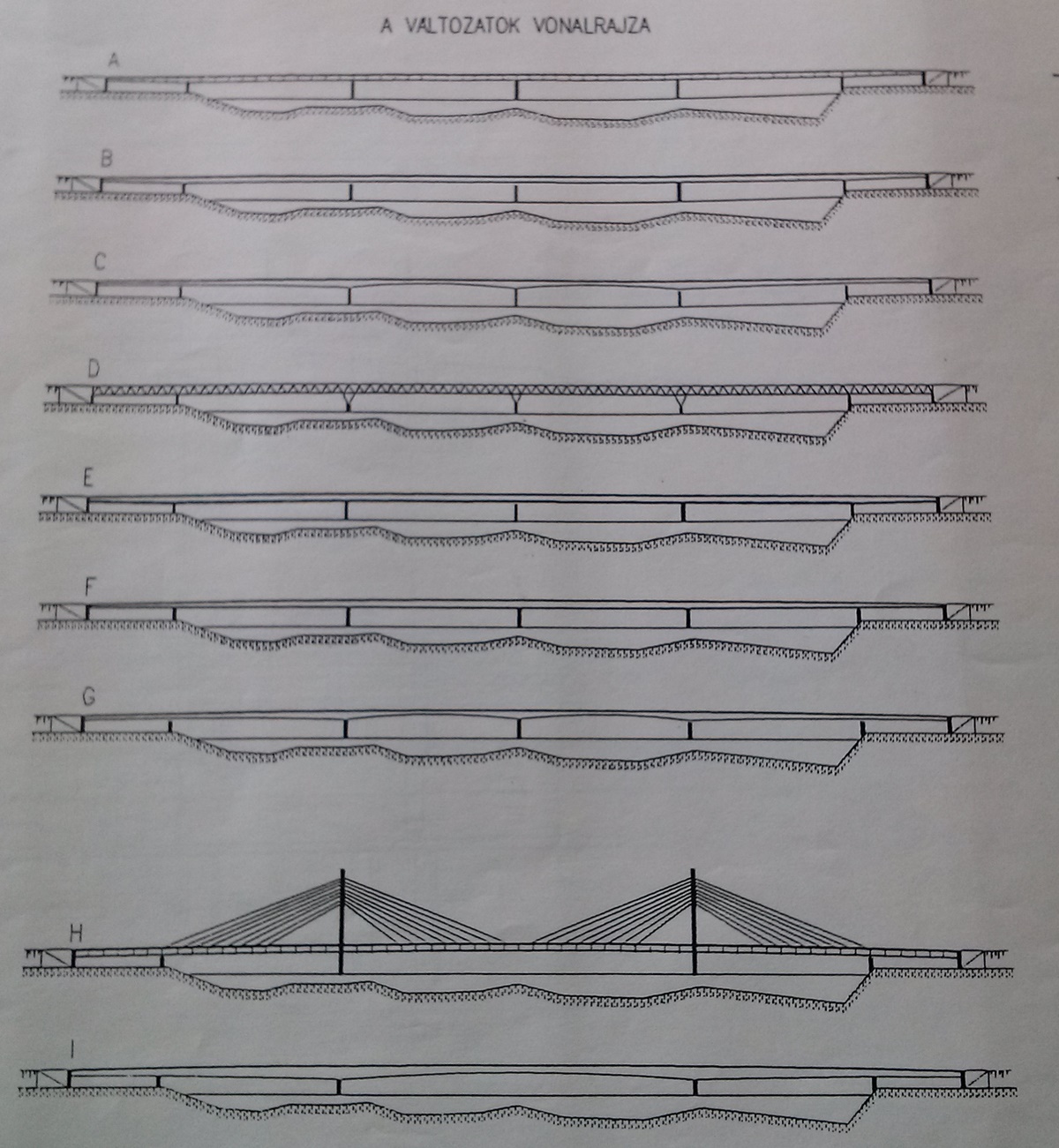
Design variations from 1991–1992 (Photo: from documents owned by Tibor Sigrai, photographed by the author)
Naturally, history had a say in matters. In 1990 the old socialist councils were replaced by democratically elected local councils. In the 11th District the bridge and Hamzsabégi Road, leading to it, were central questions of the election.
The newly elected local council in the 11th District rejected the plans for the bridge. They would have preferred it be built further south, in line with Galvani Road. They also rejected the widening on Hamzsabégi Road into a major artery, and the idea to have traffic flow onto the bridge through it. Hamzsabégi road runs parallel to the train tracks and is a narrow road and a park.
Budapest City Council also had reservations about the plans and also supported the Galvani Road location. They were not fond of the plans for the bridge either. A more appealing, aesthetic bridge would be better.

Plans for a cable-stayed Rákóczi bridge (Photo: from documents owned by Tibor Sigrai, photographed by the author)
At the time there was a major argument supporting the construction of Lágymányosi Bridge, and which meant that calls for another location were null and void. Budapest was to host a world fair in what is today Infopark and on the Pest Embankment opposite.
The bridge was needed for the World Fair. Eventually, the Budapest City Council accepted the construction of the Bridge. A compromise was reached in Buda regarding the road network. Instead of Hamzsabégi Road, Egér and Szerémi Roads would lead traffic onto the bridge.
Simultaneously, the city had UVATERV, and the architect Tibor Sigrai redesign the bridge to carry trams as well.
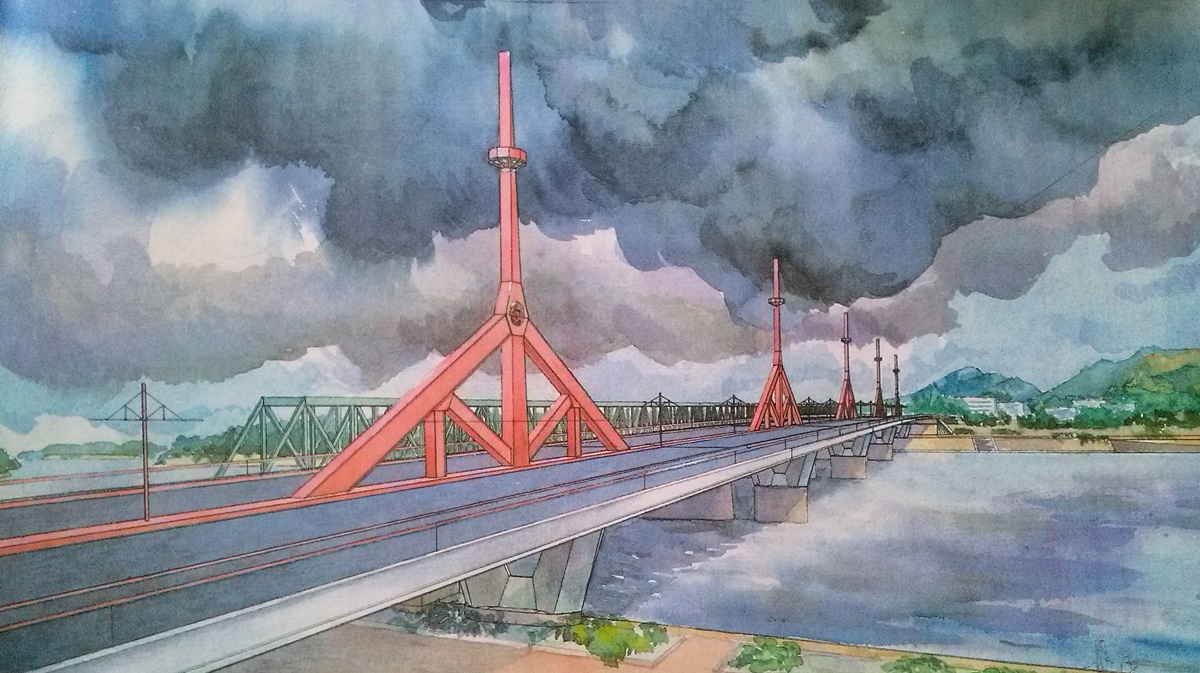
An alternative design for the bridge (Photo: from documents owned by Tibor Sigrai, photographed by the author)
The design team led by Tibor Sigrai created nine(') designs before the city eventually accepted the plans. Sloping steel supports appeared on the ninth, finally constructed plan. The support towers were topped with steel pillars onto which lights were installed, as Sigrai did not support the option of running traditional lampposts across the bridge.
Wings holding mirrors were fitted on top of the pillars and illuminated by floodlights from below. At the time, such a system was world-class, the only other operating at Frankfurt Airport. However, the solution did not work well in an urban environment. The mirrors deteriorated quickly and became less reflective. Several complaints about lighting on the bridge were filled. The system was eventually replaced, and today the wins are filled with LEDs.
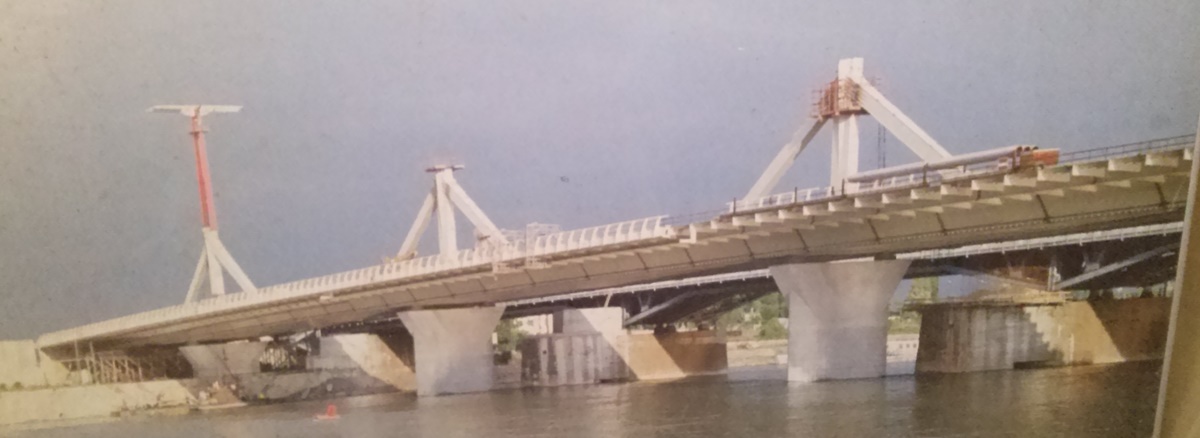
The bridge under construction (Photo: from documents owned by Tibor Sigrai, photographed by the author)
Three proposals were made for the colour of the bridge, presented on three mock-ups: red, orange and yellow. Budapest City Council chose red, however, as the primer and paint were incompatible, the red paint that once coated the bridge has now peeled off most of the bridge.
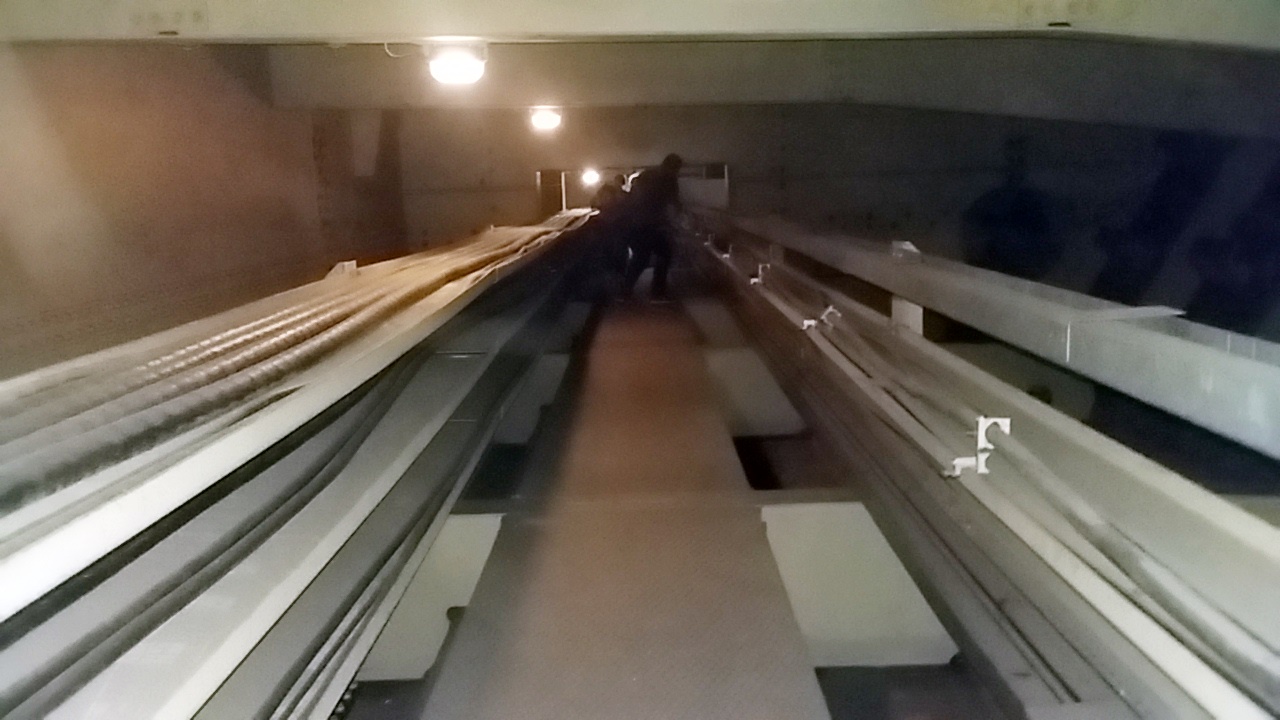
Interior of the support structure (Photo: Csaba Domonkos)
Construction began in 1992. The bridge was opened to traffic on 30 October 1995 in a remarkably modest ceremony held during the day for a handful of people. Not even the incumbent Prime Minister, Gyula Horn attended, despite it being the first new Danube bridge in the city in 50 years. Allegedly, the Prime Minister did not consider the bridge to be complete and also believed the construction to be too expensive.
Construction costs had even been slashed by only laying the structural support for the tramways, and not the tracks themselves. Those were completed only 20 years later in 2015.
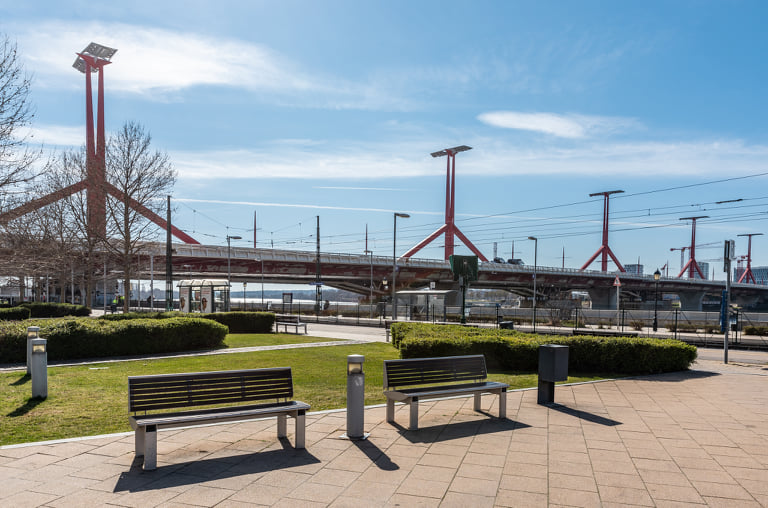
The bridge in the spring of 2020 (Photo: Balázs Both/pestbuda.hu)
At the time, critics claimed that the bridge had become more expensive because it was designed for rail traffic and not tram traffic, which would have necessitated a much stronger structure. However, the bridge's designed, Tibor Sigrai did not confirm this claim.
Not everyone was satisfied with the new bridge. The residents of Pest called the Bridge to Nowhere. The road network on the Buda side was incomplete. After a sharp left turn, the roadway ran into the unfinished Szerémi Road, and trams did not cross the bridge. Many considered the cost of 16 billion HUF to be too high.
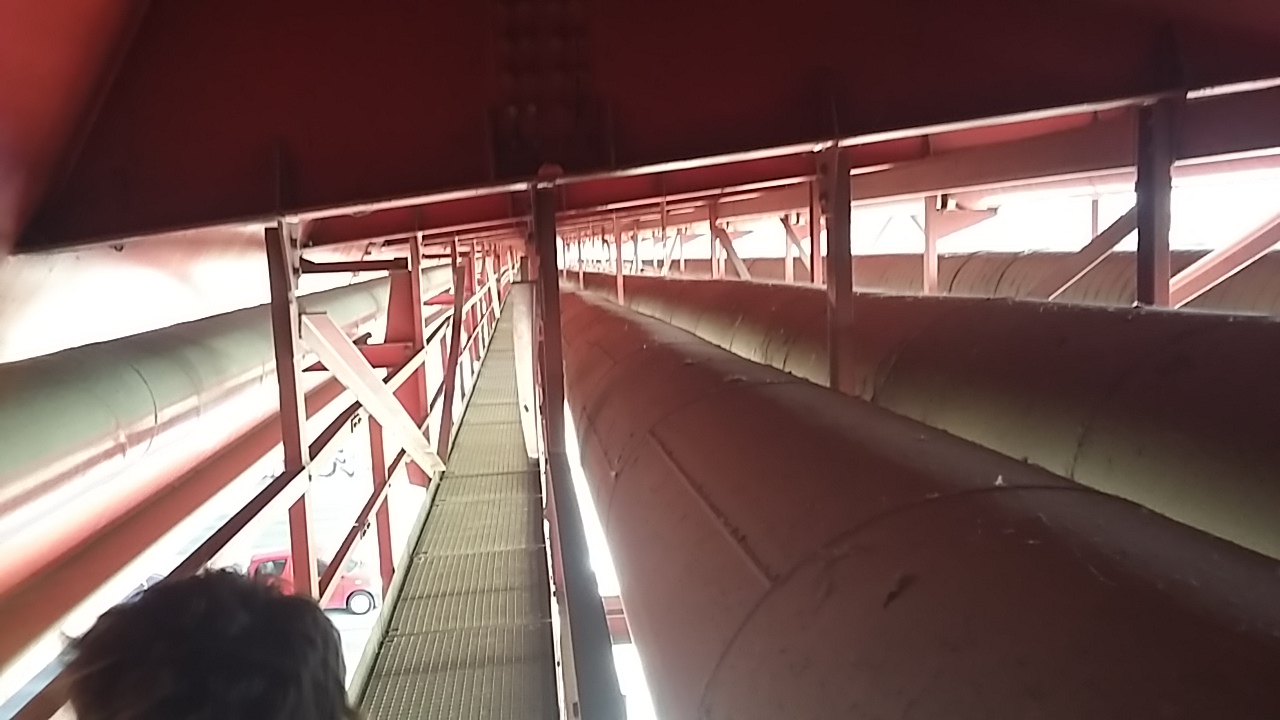
Maintenance access on the bride (Photo: Csaba Domonkos)
The Buda road network was only completed several years later. The structure is unique and has by the present day, become one of Budapest's busiest bridges.
The General Assembly of Budapest City Council chose the bridge's original name "Lágymányosi Bridge" a month before its opening. Over the years several other names were floated. The bridge was given its current name in 2011, on the 300-year-anniversary of the Treaty of Szatmár. The name refers not to a single person but the whole Rákóczi family and pays homage to their place in Hungarian history.
Cover photo: Rákóczi Bridge (Photo: Csaba Domonkos)

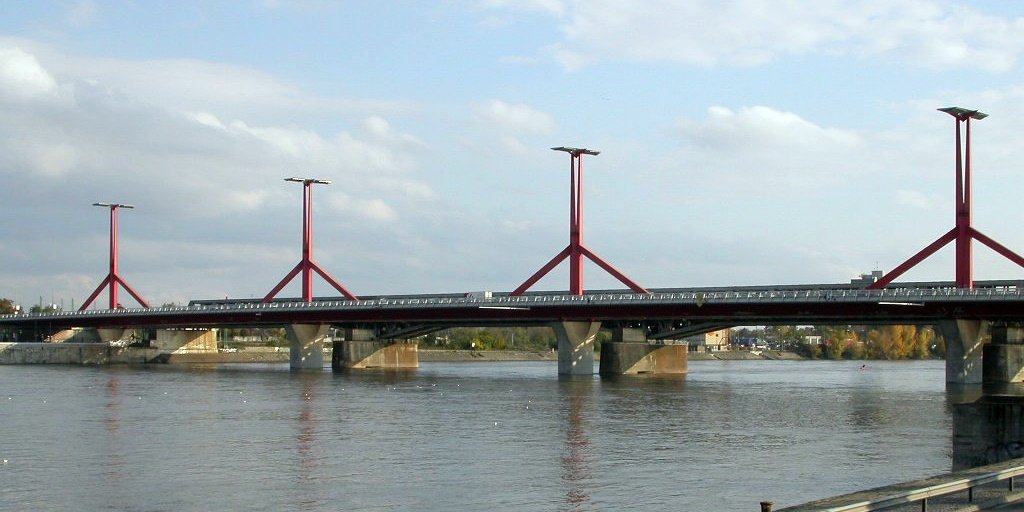



































Hozzászólások
Log in or register to comment!
Login Registration